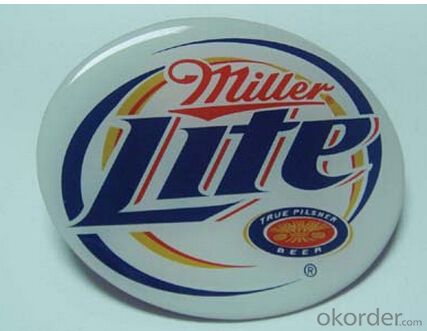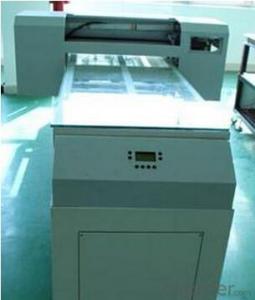Coated Tinplate for Packaging for Metal Cans
- Loading Port:
- China main port
- Payment Terms:
- TT OR LC
- Min Order Qty:
- 25 m.t.
- Supply Capability:
- 30000 m.t./month
OKorder Service Pledge
OKorder Financial Service
You Might Also Like
Coated Tinplate for Packaging for Metal Cans
1. Product Description:
Tinplate and TFS are widely used for making all types of containers such as artistic cans, tea cans, painting cans, chemical package cans and metal printing etc. Its applications are not limited to containers; recently, they have also been used for making electrical machinery parts and many other products.
2. Product Features:
Fully Automatic
Beautiful Appearance
Excellent Paintability & Printability
Excellent Formability & Strength
Excellent Corrosion Resistance
Excellent Solderability & Weldability
3. Product Parameters:
Technical standard | JISG3315 and GB/T24180 - 2009 (BS EN 10202:1990) |
Steel Type | MR / SPCC |
Thickness | From 0.15mm to 0.50mm (Tolerance +/- 0.01mm) |
Width | Normally 600-1050mm (Tolerance +3/-0 mm) |
Coating | Total chromium min 30mg/m2 max 140mg/m2 |
Temper & Annealing | T1-T5, DR7-8, TS230-TH435, T49-T65(+/- 4) |
Surface Treatment | Bright & Fine Stone & Stone & Silver & Matt |
Payment terms | Letter of Credit (L/C), Telegraphic transfer (T/T) |
Price terms | CFR & CIF price term |
Delivery time | Within 60 days after received L/C or T/T down payment |
Packing | High quality shipping packing which contains thin plastic film, rust-proof paper, metal cover, metal angles and strap sand pallet. |
Minimum order Quantity(MOQ) | 25 metric tons (1X 20'' container) |
4. FAQ:
Q1: What is your delivery time?
A: Generally, the delivery time is 70 days after receive the deposit, special specification may take more time.
Q2: What is the payment term?
A: We accept both T/T and L/C. Most customers pay by T/T.
Q3: What kind of after-sevices do you provide?
A: If it is not big problem, we can solve it by emails, phone etc. Or we went to your company to slove it in person.
5. Product Pictures:


- Q:How does tinplate packaging contribute to reducing food waste?
- Tinplate packaging helps reduce food waste by providing a secure and durable barrier that protects food from external elements, such as air, light, and moisture. This helps to extend the shelf life of food products, preventing spoilage and contamination. Additionally, tinplate packaging is highly recyclable, allowing for the efficient recovery and reuse of materials, reducing the environmental impact and promoting sustainability.
- Q:Can tinplate be used for beverage cans?
- Yes, tinplate can be used for beverage cans. Tinplate is commonly used as a coating for steel cans, providing them with corrosion resistance and a shiny appearance.
- Q:What are the different coating weights available for tinplate?
- The different coating weights available for tinplate typically range from 1.0 to 11.2 grams per square meter (g/m²), with common options including 2.8, 5.6, and 8.4 g/m².
- Q:Can tinplate be used for industrial containers?
- Yes, tinplate can be used for industrial containers. Tinplate is a type of steel coated with a thin layer of tin, which provides excellent corrosion resistance and is commonly used in the manufacturing of cans and containers for various industrial applications.
- Q:How is the thickness of tinplate measured?
- The thickness of tinplate is typically measured using a specialized instrument called a micrometer. This handheld device allows for precise measurement of the tinplate thickness by exerting pressure on the surface and providing an accurate reading in millimeters or inches.
- Q:How does tinplate packaging contribute to product protection against oxidation?
- Tinplate packaging contributes to product protection against oxidation by providing a barrier between the product and the surrounding environment. Tinplate is made by coating thin sheets of steel with a layer of tin, which acts as a protective barrier against moisture, air, and other external elements that can cause oxidation. This barrier prevents the entry of oxygen, which is necessary for oxidation to occur, thereby extending the shelf life of the product and maintaining its quality and freshness.
- Q:How is tinplate stored and transported?
- Tinplate is typically stored in a dry and well-ventilated area to prevent moisture and corrosion. It is often stacked on pallets or shelving units to maximize space utilization. When it comes to transportation, tinplate is usually packed in bundles or coils and loaded onto trucks, ships, or trains. Proper packaging and securing methods are employed to ensure its safety during transit, minimizing the risk of damage or deformation.
- Q:Can tinplate be used for outdoor signage?
- Yes, tinplate can be used for outdoor signage. Tinplate is a durable material that can withstand various weather conditions, making it suitable for outdoor applications such as signage. Its corrosion-resistant properties and ability to be easily shaped and printed on make it a popular choice for outdoor signage.
- Q:Can tinplate be used for packaging agricultural products?
- Yes, tinplate can be used for packaging agricultural products. Tinplate is a popular choice for packaging due to its durability, resistance to corrosion, and ability to protect against light, moisture, and oxygen. It provides a safe and secure packaging solution for agricultural products, ensuring their freshness and extending their shelf life.
- Q:What are the main challenges in the production of tinplate?
- The main challenges in the production of tinplate include ensuring a consistent quality of tin coating on the steel substrate, controlling the thickness of the tin layer, preventing contamination during the production process, managing the formation of tin oxide, and minimizing the occurrence of defects such as pinholes or scratches on the tinplate surface. Additionally, maintaining a stable and efficient production line, optimizing energy consumption, and complying with environmental regulations are also significant challenges.
1. Manufacturer Overview |
|
|---|---|
| Location | |
| Year Established | |
| Annual Output Value | |
| Main Markets | |
| Company Certifications | |
2. Manufacturer Certificates |
|
|---|---|
| a) Certification Name | |
| Range | |
| Reference | |
| Validity Period | |
3. Manufacturer Capability |
|
|---|---|
| a)Trade Capacity | |
| Nearest Port | |
| Export Percentage | |
| No.of Employees in Trade Department | |
| Language Spoken: | |
| b)Factory Information | |
| Factory Size: | |
| No. of Production Lines | |
| Contract Manufacturing | |
| Product Price Range | |
Send your message to us
Coated Tinplate for Packaging for Metal Cans
- Loading Port:
- China main port
- Payment Terms:
- TT OR LC
- Min Order Qty:
- 25 m.t.
- Supply Capability:
- 30000 m.t./month
OKorder Service Pledge
OKorder Financial Service
Similar products
New products
Hot products
Hot Searches
Related keywords




























